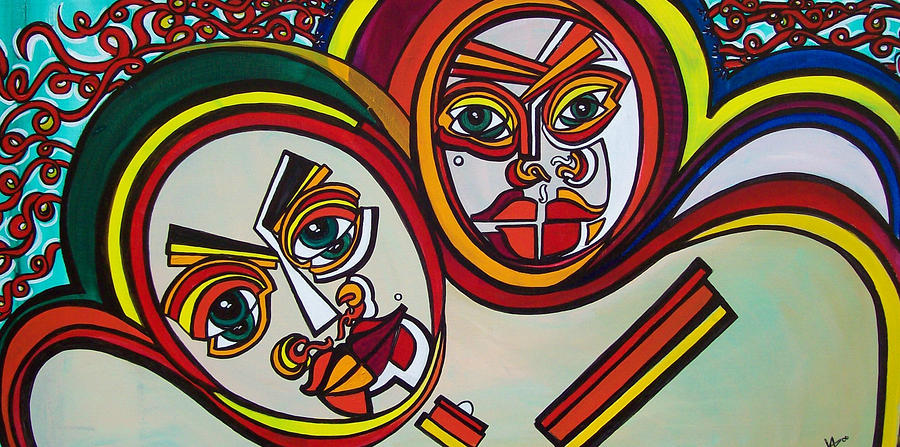

Unity in art series#
Monet’s other painting from this series is similar, for example, Poplars at the River Epte (1900), which depicts seven trees running in a line.

In this painting there are four trees along the banks of the Epte River, they appear evenly spaced and create consistent vertical lines in the composition. Several other regular rhythm art examples include The Four Trees (1891) by Claude Monet, which forms part of his Poplar Series (1981 to 1900). This can also be viewed as a random rhythm example, which we will discuss in more detail below.įall Plowing (1931) by Grant Wood Grant Wood, Public domain, via Wikimedia Commons However, surrounding these are different lines from the surrounding hills, which create a different rhythm adding variety. Here we see in the middle of the composition a regular rhythm created by the large grass bundles on the plowed field as well as the plow lines in the foreground of the composition. However, this can be countered by adding more variety here and there within the same composition.Īn example of this can be found in the oil painting Fall Plowing (1931) by the American artist Grant Wood. On Lake Geneva: Landscape with Rhythmic Shapes (1908) by Ferdinand Hodler Ferdinand Hodler, Public domain, via Wikimedia CommonsĬonversely, if there is too much of a regular rhythm in an art composition it can appear boring or too repetitive. With this, regular rhythm in art is characterized by simplicity and ease, think of drawing repeating horizontal or vertical lines next to or on top of one another evenly spaced, it will create an even visual rhythm. Some examples frequently used from the world of sound include imagining the rhythm of a heartbeat, a clock, or a tap dripping. However, usually similar art elements or motifs are arranged to create regularity. Whether different art elements are utilized, for example, color, line, or shapes, these are arranged in even and consistent patterns. A regular rhythm is consistent with its motifs. Let us start with the regular rhythm in art, which is simply what its name suggests, regular. We will also provide several rhythm art examples from different artists throughout art history. Below we will discuss the five types of rhythm in art, which are also the techniques utilized to apply this principle in a composition. It is important to note that some art sources provide three primary types of rhythm and other art sources provide five. Rehearsal of the Pasdeloup Orchestra at the Cirque d’Hiver (1879-1880) by John Singer Sargent John Singer Sargent, Public domain, via Wikimedia Commons

It will all be dependent on how the different art elements, mentioned above, are applied and combined. This also allows artists of all modalities, be it drawing, graphic design, painting, or sculptures and installations, the ability and freedom of expression to play around with rhythm and apply it in many ways to create the desired effect for their artworks.Īrtists can either choose to create a hyper-energized or dynamic artwork, something more calming and fluid, or something more orderly and geometrically structured. To distill the essence of rhythm can also be challenging to achieve or apply in artwork as there are many ways to create it in art. Le Chahut (1889) by Georges Seurat Georges Seurat, Public domain, via Wikimedia CommonsĪ rhythm art example would be applying similar colors next to one another in a sequence or an arrangement of shapes or lines that create a flow or movement to the artistic composition, and as a result, this flow or movement creates the rhythm. In visual arts, this would be the art elements, which consist of color, value, line, shapes, forms, space, and texture. The above rhythm definition points to its inherent meaning, which is that rhythm is created by the repetition or pattern of various elements. There are various definitions of the word “rhythm”, one being, according to the Merriam-Webster Online Dictionary, is that rhythm is “movement, fluctuation, or variation marked by the regular recurrence or natural flow of related elements”. These principles can also be called design principles, they are namely, balance, emphasis, movement, unity, harmony, variety, proportion, scale, and rhythm. Rhythm in art is part of several principles of art. 5.2 What Are the Types of Rhythm in Art?įirst, we will provide a brief overview of what rhythm is and where it comes from in visual arts.


 0 kommentar(er)
0 kommentar(er)
